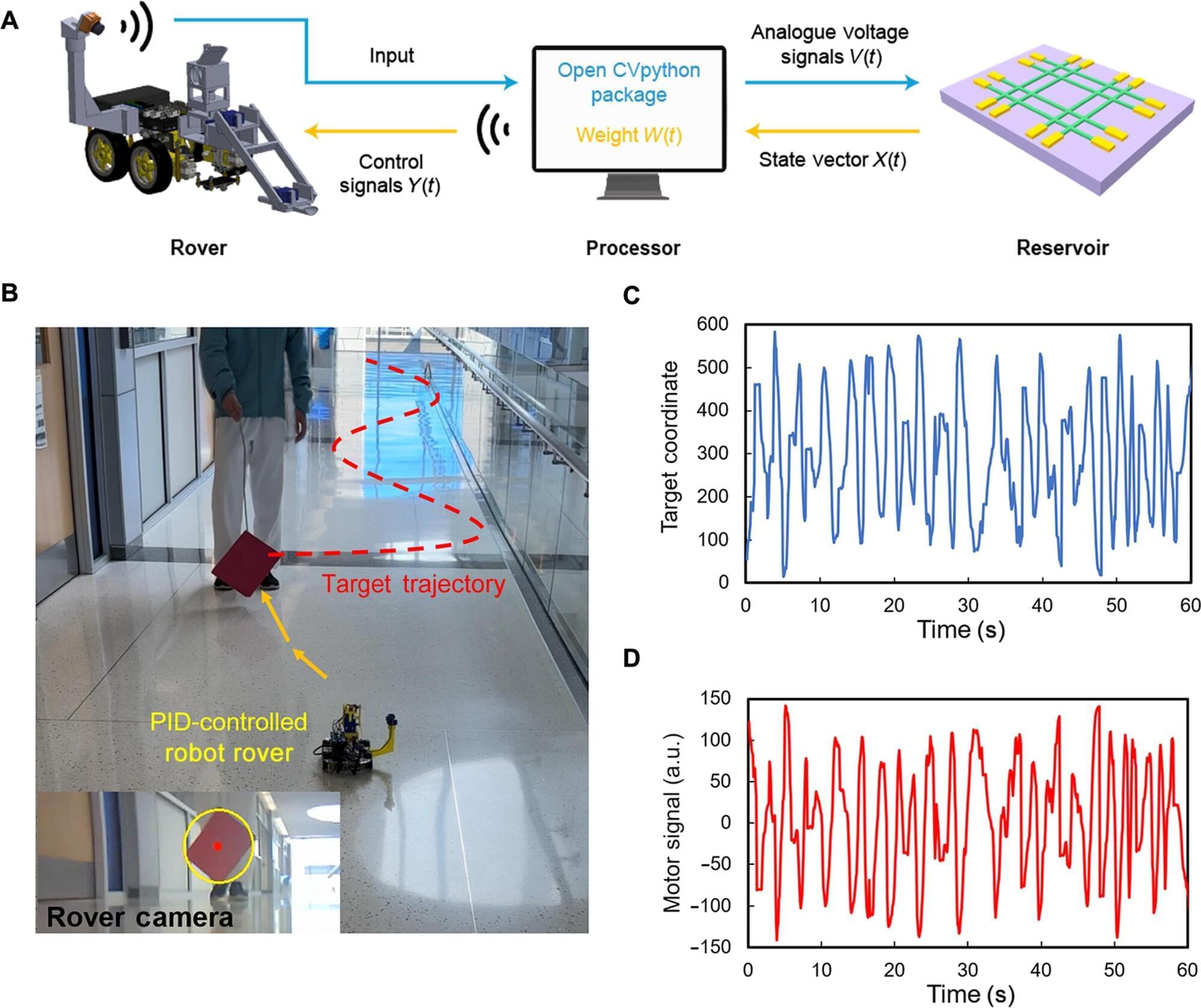A smaller, lighter and more energy-efficient computer, demonstrated at the University of Michigan, could help save weight and power for autonomous drones and rovers, with implications for autonomous vehicles more broadly.
The autonomous controller has among the lowest power requirements reported, according to the study published in Science Advances. It operates at a mere 12.5 microwatts—in the ballpark of a pacemaker.
In testing, a rolling robot using the controller was able to pursue a target zig-zagging down a hallway with the same speed and accuracy as with a conventional digital controller. In a second trial, with a lever-arm that automatically repositioned itself, the new controller did just as well.
